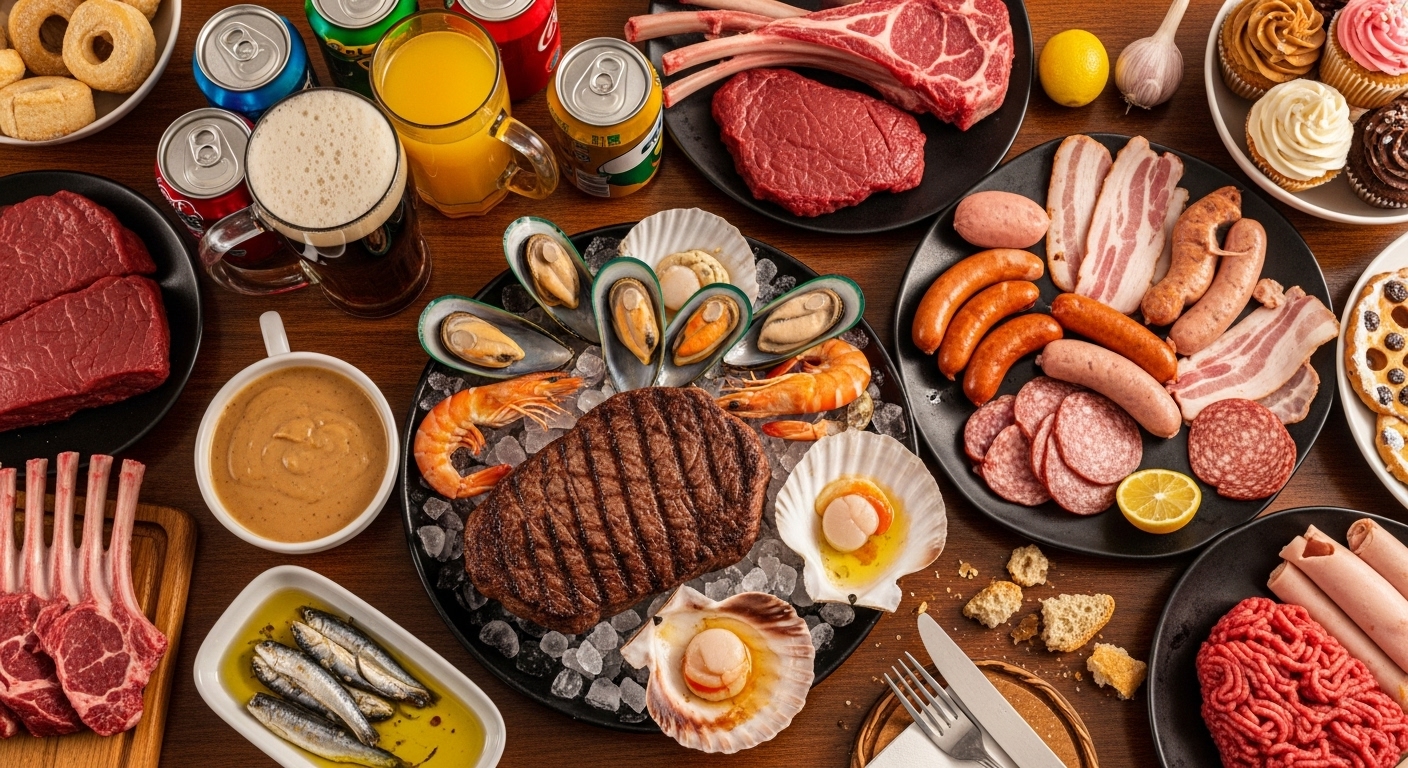Dr. Kumar’s Take
This NEJM study is one of the most influential dietary investigations on gout. For decades, patients were warned to avoid all purine-rich foods, from meat to beans. But this prospective study following over 47,000 men for 12 years overturned much of that advice. Meat and seafood did indeed raise gout risk. But purine-rich vegetables and protein intake did not, and dairy consumption, especially low-fat dairy, actually reduced risk. The study reshaped how we counsel patients, moving from blanket restrictions to more nuanced, evidence-based recommendations.
Key Takeaways
✔ Meat increases risk: Highest consumers had a 41% higher gout risk.
✔ Seafood increases risk: Highest consumers had a 51% higher gout risk.
✔ Dairy protects: High intake reduced gout risk by ~44%.
✔ Vegetables are safe: Purine-rich vegetables did not increase risk.
✔ Protein is not harmful: Neither total protein nor animal protein raised risk.
Actionable Tip
If you’re at risk for gout, focus on reducing meat and seafood, not necessarily all purine sources. Adding dairy like milk or yogurt may provide protection. Don’t unnecessarily restrict beans, lentils, or spinach — they are safe and healthy.
Study Summary
Published in The New England Journal of Medicine (2004), this prospective cohort study tracked 47,150 men without prior gout for 12 years. Dietary intake was assessed every 4 years, and 730 new cases of gout were confirmed using strict American College of Rheumatology criteria.
- Meat: Higher intake → higher risk (RR 1.41 for top vs. bottom quintile).
- Seafood: Higher intake → higher risk (RR 1.51 for top vs. bottom quintile).
- Dairy: Higher intake → lower risk (RR 0.56 for top vs. bottom quintile).
- Vegetables: No association.
- Protein: No risk increase; vegetable and dairy protein may even be protective.
Study Design
- Population: 47,150 U.S. health professionals (dentists, pharmacists, vets, etc.), aged 40–75.
- Duration: 12 years.
- Methods: Food-frequency questionnaires (validated) every 4 years; gout confirmed by survey + ACR criteria.
- Analysis: Cox proportional-hazards models adjusting for age, BMI, alcohol, hypertension, diuretic use, and renal failure.
Results
- Meat: Each daily serving increased gout risk by 21%.
- Seafood: Each weekly serving increased risk by 7%.
- Dairy: Two+ glasses of skim milk daily cut gout risk almost in half (RR 0.54).
- Vegetables: Lentils, peas, spinach, and mushrooms were neutral.
- Protein: No increased risk; vegetable protein RR 0.73, dairy protein RR 0.52.
- BMI effect: Seafood risk was stronger in lean men (BMI <25).
Why This Matters
This study corrected decades of dogma. Traditional advice lumped all purine-rich foods together, unfairly vilifying beans and vegetables. But the evidence shows that the source matters. Animal purines (meat, seafood) raise gout risk; plant purines do not. Dairy, once feared for protein, turned out to be protective — likely due to uricosuric proteins like casein and lactalbumin.
Related Studies and Research
Alcohol and Gout Attacks: A Case-Crossover Study – Examines how recent alcohol intake can trigger acute gout attacks.
Glorification of Gout in Literature – Investigates how gout was once a status symbol in European literature.
Uric Acid and Human Evolution – Explores the evolutionary link between uric acid and modern disease patterns.
Podcast: How to Make Gout Disappear from Your Life – A comprehensive look at modern and ancient gout science—and how to beat it.
Frequently Asked Questions
Should I avoid all high-protein foods if I have gout?
No. This study shows protein itself is not harmful. Focus on reducing animal purines (meat/seafood). Plant proteins and dairy are safe.
Why do dairy products help?
Milk proteins increase uric acid excretion (uricosuric effect) without adding purines, lowering gout risk.
Can I eat beans and lentils with gout?
Yes. Purine-rich vegetables and legumes were not linked to gout in this study.
Is fish always bad for gout?
Not always. While seafood increased risk, some fish are heart-healthy. Balance is key, especially if you also have cardiovascular risk.
Conclusion
This landmark NEJM study shifted our understanding of diet and gout. Meat and seafood remain clear risks, while dairy offers protection. Purine-rich vegetables are innocent, and protein should not be feared. For patients, this means more freedom, less guilt, and smarter choices, focusing on the foods that truly matter.


